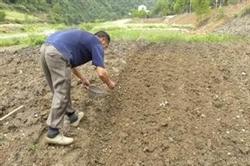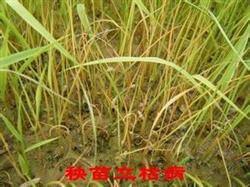What are the characteristics of the harm of big crickets on peanuts? How to prevent and cure?

What are the characteristics of the harm of big crickets on peanuts? How to prevent and cure? (1) morphological characteristics: big crickets are commonly known as big native dogs, big-headed crickets and so on. ① adult, about 41 mm long, 13 mm wide, yellow, brown, dark brown. There is a "Y"-shaped shallow groove between the compound eyes. The forechest is well developed, with obvious longitudinal grooves, peach patches on both sides and lighter color. The veins of the forewing of the female are mostly reticulate and crossed longitudinally, no transverse veins, no sound, and there is an oviposition tube at the end of the abdomen. The elbow vein of the male's forewing forms a rough contusion, and it can make sound when the two wings are rubbed and vibrated. ② ovoid, obtusely rounded at both ends, long reniform, ca. 4mm long and 1.4mm wide. The eggshell is smooth, slightly transparent, bluish gray at first birth, yellowish after birth, and yellowish before hatching. ③ nymph molted 10 times for a total of 11 years old. The nymph had no wing bud before the 7th instar. The last instar larvae are dark brown, waxy yellow on the ventral surface and about 35 mm in length. (2) occurrence regularity: big crickets usually have one generation a year. Overwintering with nymphs in soil holes. The activities were unearthed from March to May in the M year, harming peanut seedlings. The adults emerged into adults in early June, mating during the day from July to August, the spawning period was in the middle of September, and the adults died one after another after September. The nymphs began to overwintering in the middle and late November. (3) Prevention and control measures: ① poison bait. 1 part of 50% phoxim wettable powder, 5 parts of fried rice bran, mixed well, and then mixed with an appropriate amount of water into poison bait, made into soybean-sized particles, sprinkled near the hole in the evening, the worm came out of the hole at night and was poisoned after feeding. ② winter tillage to get rid of insects. After the peanuts were harvested in autumn, the overwintering larvae were turned over to death by freezing or being eaten by black after ploughing and raking for 1 or 2 times.
- Prev

Make good use of base fertilizer when sowing peanuts and soybeans
Some farmers do not apply any fertilizer when sowing these crops, which is one of the important reasons that restrict the yield of peanuts and soybeans. Although legume crops can use the nitrogen fixation function of rhizobium to absorb nitrogen in the air to supplement nutrients, but the amount of nitrogen fixation is only 2 × 3-1 × 2, and phosphorus and potassium nutrients.
- Next

How to control bacterial wilt and bacterial wilt of rice that have been raised for 10 days?
The prevention of bacterial wilt and bacterial wilt is more important than control, and only when the rice seedlings are strong, it is not easy to catch the disease, so it is necessary to strengthen field management. Pay attention to control the nursery bed temperature, not too high, too low. Special attention should be paid to the effect of low temperature in late spring on rice seedlings, suitable time for seedling refining and squatting.
Related
- The first cup of black tea in spring, the flavor and history of tea gardens in Kenya, Africa
- The computer can not only choose potatoes, but also grow tea rice. AI will grow winter oolong tea champion.
- It is not only the inflated tea bitten by insects, but also engraved with the four seasons tea in Beipu.
- The Oriental Beauty Tea Festival in Zhuxian County takes the stage at the weekend to experience the plus-size feast of oil tea.
- & quot; Oriental Beauty Tea & Exploration of Emei in Hsinchu, the hometown of quot;
- The new variety of strawberry "Tainong 1" dessert is the first choice with mellow aroma. Crimson gorgeous
- History of Tea in Taiwan: from Wild Inner Mountain to Export Tea Garden
- Two types of Taiwan Oriental Beauty Black Tea won the British three-Star Award for Childhood Tea Xiang Zhang Jiaqi changed from pilot to champion tea maker.
- Banana species and varieties: the planting history of Taiwan Xianren banana and dwarf banana is long, is banana disease resistant?
- Coffee planting Technology: Qianjie Coffee from Seedling to harvesting

